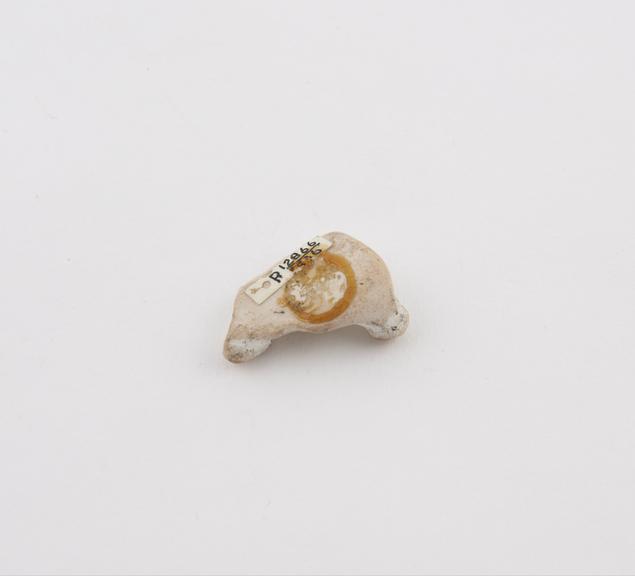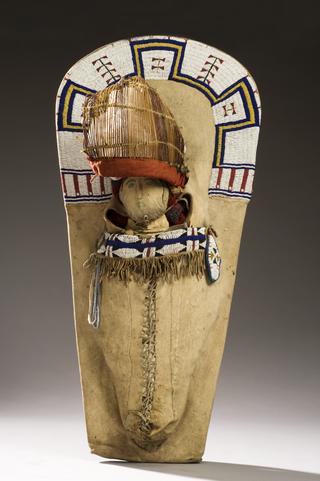

Small flint module, used as amulet against teething, collected in South Devon, English 1913
The growing influence of biomedicine in the 1800s did not necessarily replace established forms of treatment based on belief and superstition. What could be referred to as folk medicine – customs that often went back generations – continued to be practised. For example, some believed that tooth shaped pieces of flint such as those in the background of this image could act as protective amulets against teething pains. It was hoped that the child’s pain would be transferred to the flint.
This amulet was a gift to the Wellcome collections in 1916 from Edward Lovett (1852-1933), a collector of British amulets and charms. It is pictured here with other teething amulets: a piece of turf (A132465), a necklace of woody nightshade (A132471), and a calf’s tooth (A665423).
Details
- Category:
- Ethnography and Folk Medicine
- Collection:
- Sir Henry Wellcome's Museum Collection
- Object Number:
- A132464
- Materials:
- flint
- Measurements:
-
overall: 12 mm x 30 mm x 22 mm, .004 kg
- type:
- amulet
- credit:
- Lovett, E.R.




